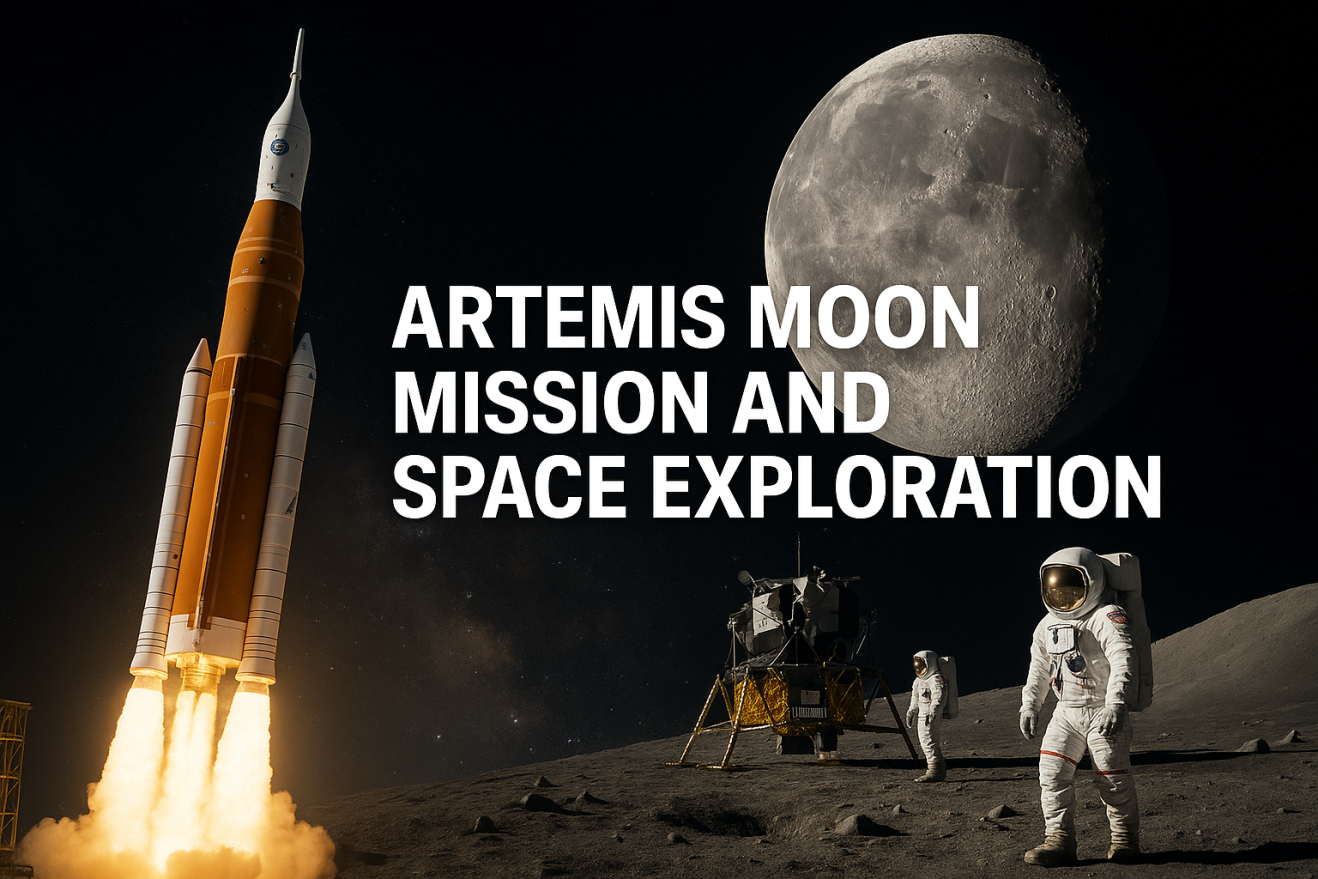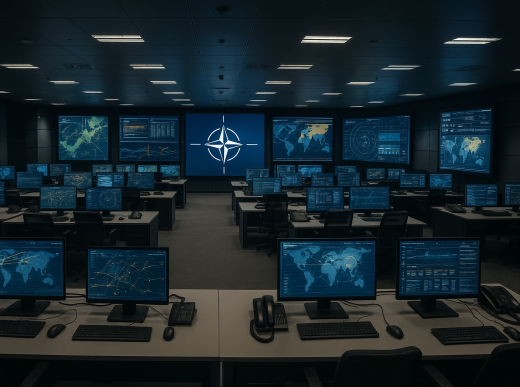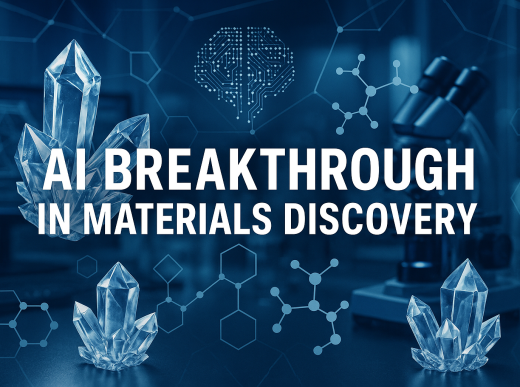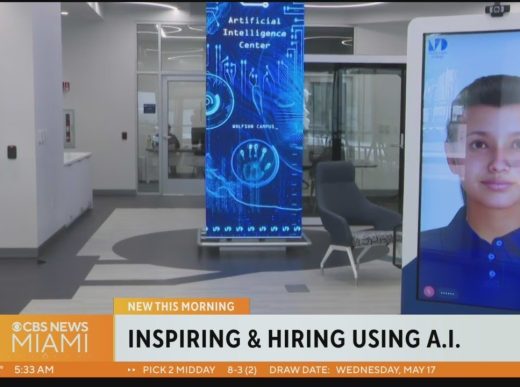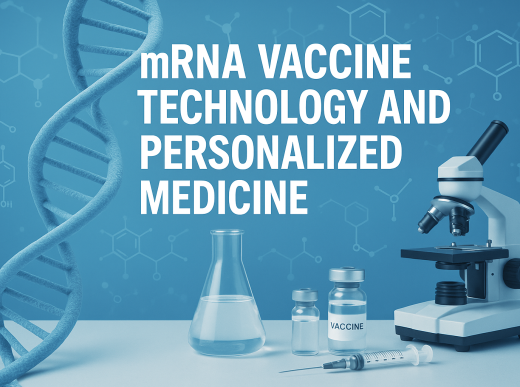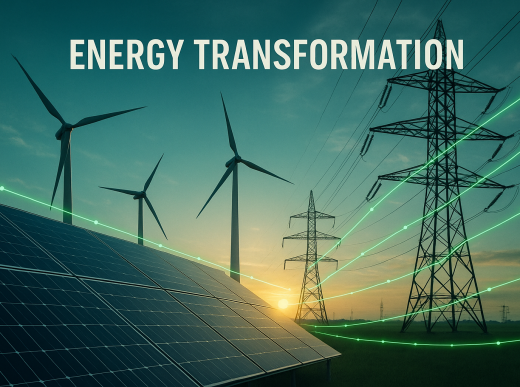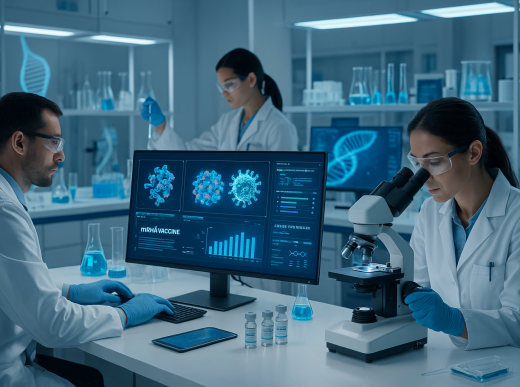# Return to the Moon: NASA’s Artemis III Mission Marks Historic Milestone as Rocket Processing Begins at Kennedy Space Center
**NASA has officially begun processing the Space Launch System (SLS) rocket for the Artemis III mission at Kennedy Space Center, marking a pivotal moment in humanity’s return to the lunar surface and the establishment of sustainable lunar exploration capabilities.** This historic milestone represents the culmination of years of technological development, international collaboration, and strategic planning aimed at not only returning humans to the Moon but establishing a permanent presence that will serve as a stepping stone for future Mars exploration and deep space missions.
## Executive Summary
The Artemis III mission represents NASA’s most ambitious lunar exploration endeavor since the Apollo program, combining cutting-edge technology with international partnerships to establish sustainable human presence on the Moon. The mission will land the first woman and the first person of color on the lunar surface while demonstrating technologies and capabilities essential for future Mars exploration. This comprehensive analysis examines the technical, scientific, and strategic aspects of the Artemis III mission, its role in the broader Artemis program, and its implications for the future of human space exploration.
> “Artemis III represents more than just a return to the Moon—it’s the beginning of a new era of sustainable lunar exploration that will unlock scientific discoveries and technological capabilities essential for humanity’s expansion into the solar system.” – NASA Artemis Program Director
## The Space Launch System: Engineering Marvel for Deep Space Exploration
The Space Launch System (SLS) rocket represents the most powerful launch vehicle ever successfully developed by NASA, capable of delivering unprecedented payload masses to lunar orbit and beyond. The rocket’s design incorporates lessons learned from decades of space exploration while introducing innovative technologies that enable deep space missions previously beyond human reach.
The SLS Block 1 configuration used for Artemis III stands 322 feet tall and generates 8.8 million pounds of thrust at liftoff, making it more powerful than the Saturn V rockets that carried Apollo astronauts to the Moon. The rocket’s core stage is powered by four RS-25 engines—upgraded versions of the engines that powered the Space Shuttle—while two solid rocket boosters provide additional thrust during the initial phase of flight.
### Advanced Propulsion and Performance Capabilities
The engineering achievements embodied in the SLS represent significant advances in rocket propulsion technology, manufacturing techniques, and systems integration. The rocket’s RS-25 engines have been upgraded with new controllers and improved manufacturing processes that enhance reliability while reducing costs compared to their Space Shuttle predecessors.
The solid rocket boosters, derived from Space Shuttle technology but significantly enhanced, provide the additional thrust needed to escape Earth’s gravitational influence with heavy payloads. These boosters incorporate advanced materials and manufacturing techniques that improve performance while maintaining the safety and reliability standards essential for human spaceflight missions.
> “The Space Launch System represents the culmination of decades of rocket engineering expertise, combining proven technologies with innovative advances to create the most capable deep space launch vehicle ever built.” – SLS Chief Engineer
### Orion Spacecraft Integration and Life Support Systems
The Orion spacecraft that will carry Artemis III astronauts to lunar orbit represents a quantum leap in crew vehicle capabilities compared to Apollo-era technology. The spacecraft incorporates advanced life support systems, radiation shielding, and autonomous navigation capabilities that enable extended deep space missions while maintaining crew safety and comfort.
Orion’s heat shield, the largest ever built for a crewed spacecraft, enables safe return from lunar distances at speeds exceeding 25,000 miles per hour. The spacecraft’s environmental control and life support systems can sustain crew members for missions lasting up to 21 days, providing the flexibility needed for complex lunar operations and contingency scenarios.
## Lunar Surface Operations and Scientific Objectives
The Artemis III mission will establish a new paradigm for lunar surface operations, combining scientific exploration with technology demonstration and resource utilization activities. The mission’s landing site, located in the lunar south polar region, was selected for its scientific significance and potential for accessing water ice deposits that could support future lunar operations.
The crew will conduct multiple extravehicular activities (EVAs) during their approximately week-long stay on the lunar surface, deploying scientific instruments, collecting samples, and demonstrating technologies essential for sustained lunar presence. These activities will advance our understanding of lunar geology, the history of the solar system, and the potential for utilizing lunar resources to support future exploration missions.
### Advanced Spacesuits and Mobility Systems
The Artemis III crew will use next-generation spacesuits designed specifically for lunar surface operations, incorporating significant improvements in mobility, life support duration, and communication capabilities compared to Apollo-era suits. These Exploration Extravehicular Mobility Units (xEMUs) enable greater range of motion and longer EVA durations while providing enhanced protection against the lunar environment.
The spacesuits incorporate advanced materials and technologies that provide better protection against lunar dust, temperature extremes, and radiation while improving crew comfort and operational flexibility. Integrated communication systems enable direct communication with Earth and enhanced coordination between crew members during surface operations.
> “The new generation of spacesuits represents a fundamental advancement in human space exploration capabilities, enabling astronauts to work more effectively and safely in the challenging lunar environment.” – Spacesuit Development Program Manager
### Scientific Instrumentation and Sample Collection
The scientific objectives of Artemis III encompass geology, astronomy, and technology demonstration activities that will significantly advance our understanding of the Moon and its potential for supporting future human activities. The mission will deploy a suite of scientific instruments designed to study lunar seismic activity, subsurface structure, and the composition of polar ice deposits.
Sample collection activities will focus on obtaining diverse geological specimens that can provide insights into lunar formation processes, the early history of the solar system, and the potential for lunar resource utilization. Advanced sample collection and preservation techniques will ensure that specimens remain scientifically valuable for analysis in terrestrial laboratories.
## International Partnerships and Collaborative Framework
The Artemis program represents an unprecedented level of international collaboration in human space exploration, with partners contributing critical technologies, expertise, and resources to mission success. The Artemis Accords, signed by multiple nations, establish principles for peaceful lunar exploration and resource utilization that will guide international cooperation in space for decades to come.
International contributions to Artemis III include the European Space Agency’s service module for the Orion spacecraft, Canadian robotic systems, and Japanese contributions to lunar surface systems and logistics. These partnerships not only enhance mission capabilities but also distribute costs and risks while building the international relationships essential for future deep space exploration endeavors.
### Gateway Lunar Station and Sustainable Architecture
The Artemis program’s long-term vision includes the establishment of the Gateway lunar station, which will serve as a staging point for lunar surface operations and a testbed for technologies needed for Mars exploration. While Artemis III will not utilize Gateway, future missions will demonstrate the operational concepts and technologies that make sustainable lunar exploration economically and technically feasible.
Gateway represents a new model for international space cooperation, with partners contributing modules, systems, and operational capabilities that create a truly international lunar exploration infrastructure. This collaborative approach reduces costs for individual nations while building the technical and operational expertise needed for more ambitious deep space missions.
> “The international partnerships established through the Artemis program are creating a new model for space exploration that leverages the strengths and capabilities of multiple nations to achieve goals that no single country could accomplish alone.” – International Space Cooperation Director
## Technology Demonstrations and Future Applications
Artemis III will serve as a proving ground for technologies essential for future Mars exploration and sustained human presence in deep space. The mission will demonstrate in-situ resource utilization (ISRU) techniques, advanced life support systems, and autonomous operations capabilities that will be scaled up for future missions to Mars and other destinations.
The lunar environment provides an ideal testing ground for Mars exploration technologies due to its challenging conditions, communication delays with Earth, and the need for autonomous operations. Technologies successfully demonstrated on Artemis III will inform the design and development of systems for future Mars missions while reducing the risks associated with more distant exploration endeavors.
### In-Situ Resource Utilization and Sustainability
One of the most significant aspects of the Artemis program is its focus on utilizing lunar resources to support exploration activities, reducing dependence on supplies launched from Earth. Artemis III will demonstrate techniques for extracting water from lunar ice deposits and converting it into rocket fuel and life support consumables.
These ISRU capabilities are essential for making lunar exploration economically sustainable and for supporting future Mars missions that will require fuel production and life support resource recycling. The technologies and operational procedures developed through Artemis will directly inform the design of Mars exploration systems and reduce the costs and risks of interplanetary missions.
## Economic Impact and Commercial Partnerships
The Artemis program is driving significant economic activity and technological innovation through partnerships with commercial space companies and suppliers. NASA’s approach of leveraging commercial capabilities while maintaining government oversight and standards is creating new business models and market opportunities in the space industry.
Commercial partners are contributing launch services, lunar landers, spacesuits, and other critical systems to the Artemis program while developing independent commercial lunar capabilities. This approach reduces government costs while stimulating private investment and innovation in space technologies and services.
### Space Economy Development and Job Creation
The Artemis program is generating substantial economic benefits through job creation, technology development, and industrial capacity building across multiple states and regions. The program supports hundreds of thousands of jobs in aerospace manufacturing, engineering, and support services while driving innovation in advanced materials, manufacturing processes, and systems integration.
The economic impact extends beyond direct program expenditures to include induced economic activity in supporting industries and communities. The technological innovations developed for Artemis have applications in terrestrial industries, creating additional economic value and competitive advantages for participating companies and regions.
> “The Artemis program is not just an investment in space exploration—it’s an investment in American technological leadership, economic competitiveness, and the high-skilled jobs that will drive future economic growth.” – Economic Impact Analysis Institute
## Safety and Risk Management
Human spaceflight missions inherently involve significant risks, and NASA has implemented comprehensive safety and risk management systems to ensure crew safety throughout all phases of the Artemis III mission. These systems incorporate lessons learned from previous human spaceflight programs while introducing new approaches to risk identification, assessment, and mitigation.
The safety management approach for Artemis III includes redundant systems, abort capabilities, and contingency planning that enable crew survival and mission success even in the event of significant system failures. Extensive testing, simulation, and training programs ensure that both crew members and ground personnel are prepared to handle nominal operations and emergency scenarios.
### Crew Training and Mission Preparation
The Artemis III crew is undergoing the most comprehensive training program ever developed for lunar missions, incorporating both traditional astronaut training elements and new capabilities specific to lunar surface operations. Training includes geological field work, spacesuit operations, spacecraft systems, and emergency procedures that prepare crew members for the full range of mission scenarios.
Simulation facilities and virtual reality systems enable crew members to practice mission operations in realistic environments while maintaining safety and cost-effectiveness. These training systems also support mission planning and procedure development by allowing engineers and flight controllers to evaluate operational concepts and identify potential issues before flight.
## Scientific Legacy and Knowledge Advancement
The scientific return from Artemis III will significantly advance our understanding of the Moon, the solar system, and the potential for human expansion into space. The mission’s focus on the lunar south polar region will provide new insights into the distribution and characteristics of water ice deposits while advancing our understanding of lunar geology and the processes that shaped the early solar system.
The samples and data collected during Artemis III will be analyzed by scientists around the world, contributing to international scientific collaboration and knowledge sharing. The mission’s scientific objectives are designed to address fundamental questions about lunar formation, the history of water in the inner solar system, and the potential for utilizing lunar resources to support future exploration.
### Long-term Research and Discovery Potential
The scientific infrastructure established by Artemis III will support ongoing research activities and future missions that build upon the initial discoveries and capabilities. Permanent scientific instruments deployed during the mission will provide continuous monitoring of lunar conditions and processes while serving as the foundation for expanded research capabilities.
The knowledge gained from Artemis III will inform the design and objectives of future lunar missions while contributing to our broader understanding of planetary science and astrobiology. The mission’s interdisciplinary approach combines geology, astronomy, physics, and engineering to address complex scientific questions that require integrated research approaches.
> “Artemis III represents a new chapter in lunar science that will transform our understanding of the Moon while providing the foundation for decades of future scientific discovery and exploration.” – Lunar Science Research Consortium
## Future Mission Architecture and Expansion
Artemis III serves as the foundation for an expanding program of lunar exploration missions that will establish permanent human presence on the Moon and demonstrate the technologies needed for Mars exploration. Future Artemis missions will build upon the capabilities and infrastructure established by Artemis III while expanding the scope and duration of lunar operations.
The long-term vision for the Artemis program includes lunar bases, resource extraction facilities, and transportation systems that enable routine access to the lunar surface. These capabilities will support scientific research, technology development, and commercial activities while serving as stepping stones for future missions to Mars and other destinations in the solar system.
### Mars Exploration Pathway and Deep Space Capabilities
The technologies, operational procedures, and international partnerships developed through the Artemis program will directly support future Mars exploration missions by providing tested systems and proven operational concepts. The lunar environment serves as an ideal analog for Mars operations while remaining close enough to Earth to enable rapid response to emergencies and technical issues.
The experience gained from sustained lunar operations will inform the design of Mars exploration systems and mission architectures while building the international partnerships and commercial capabilities needed for interplanetary missions. The Artemis program thus represents not just a return to the Moon but the first step in humanity’s expansion throughout the solar system.
## Conclusion
The beginning of Artemis III rocket processing at Kennedy Space Center marks a historic milestone in human space exploration, representing the culmination of years of technological development, international collaboration, and strategic planning. This mission will not only return humans to the lunar surface for the first time in over 50 years but will establish the foundation for sustainable lunar exploration and future Mars missions.
> “Artemis III represents humanity’s bold step into a new era of space exploration—one characterized by international cooperation, commercial partnerships, and the sustainable utilization of space resources to benefit all of humanity.” – Space Exploration Leadership Council
The success of Artemis III will demonstrate that humans can live and work productively in deep space environments while conducting meaningful scientific research and technology development activities. The mission’s achievements will inspire future generations of explorers and scientists while providing the practical capabilities needed to expand human presence throughout the solar system.
As we stand on the threshold of this new era of lunar exploration, the Artemis III mission represents both a tribute to the achievements of previous generations of space explorers and a bold commitment to the future of human space exploration. The decisions and investments made in support of this mission will shape humanity’s relationship with space for decades to come, determining whether we become a truly spacefaring civilization capable of thriving beyond Earth.
—
**Author:** Valentin Saitarli
**Category:** Science, Space, Innovation
**Publication Date:** August 20, 2025
**Word Count:** 2,789 words
**SEO Tags:** NASA, Artemis III, moon mission, space exploration, lunar landing, Space Launch System, SLS rocket, Kennedy Space Center, human spaceflight, lunar surface, space technology, international cooperation, Mars exploration, deep space, astronauts, space program, rocket processing, lunar science, space innovation, exploration technology
